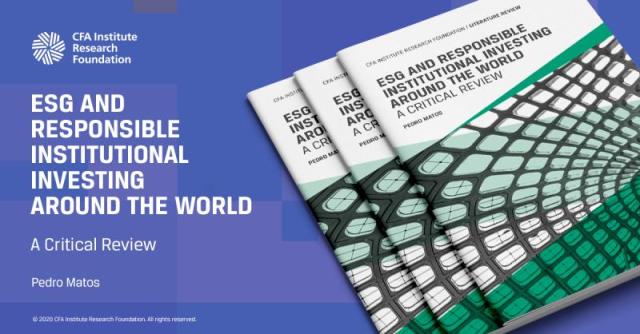[ad_1]
If the Sustainable Investment Trinomial = (Risk/Return) + Impact
Then, Impact = ESG Alpha?
The Sustainable
Investment Premise
Investment professionals slice and dice risk to generate financial return on invested capital. Sustainable investment capital increasingly demands evidence that positive impact is produced alongside positive financial return. Once adopted by investors, transparent impact metrics will initiate a rotation in portfolios that moves them away from “impact negative” and toward “impact positive” investments.
This impact-driven rotation should produce environmental, social, and governance (ESG) Alpha for investors.
Impact is hot.
“In its simplest terms, impact is the measure of an action’s benefit to people and the planet.” — Sir Ronald Cohen, Impact
Impact: Reshaping Capitalism to Drive Real Change by Sir Ronald Cohen was named one of the “Best Books of 2020—Economics” by the Financial Times. As founder of Apax Partners, Cohen is no stranger to harnessing risk to earn mouth-watering returns for investors. Since 1981, Apax Partners is synonymous with global venture capital and private equity.
Now, as chair of the Global Steering Group on Impact Investment, Cohen champions the global adoption of a standardized accounting methodology for impact measurement — Impact-Weighted Accounting (IWA).
“Asset owners are asking their asset managers for increasing amounts of reporting on impact.” — Future of Sustainability in Investment Management
The Future of Sustainability in Investment Management report from CFA Institute devotes several sections to exploring impact objectives for investment products and emphasizes the need to standardize impact measurement.
The Financial Analysts Journal awarded the prestigious 2020 Graham and Dodd Scroll Award to “Public Sentiment and the Price of Corporate Sustainability,” by George Serafeim. Serafeim describes a long–short ESG strategy with a focus on public sentiment that generated “significant positive alpha.” Public sentiment in the ESG space could be a proxy for perception of impact.
So, what’s the formula for the Sustainable Investment Trinomial?
1. Quantify Risk
Investment managers routinely calculate the “risk-adjusted return” of their portfolios. The Sharpe Ratio uses price volatility — portfolio standard deviation — as a quantitative metric for risk. But this risk proxy is only valid if the data series has a normal distribution. Beware of black swans! By the way, what time period did you choose?
SASB — Sustainability Accounting Standards Board — publishes industry-specific accounting standards and associated technical metrics for sustainability risks and opportunities likely to be financially material for investors. Climate risk, carbon risk, cyber risk, reputation risk, regulatory risk, stranded assets, and risk of loss of social license to operate, among many, many other sustainability-related risks, join the risk litany that investment professionals manage.
So get up to speed on the financially-material sustainability risks lurking in your portfolio before you find some of your assets stranded.
2. Input Return
“Return” is a concept similarly fraught with definitional challenges. Over what time horizon? Gross or net? Net of what? All costs and fees, or only some of them? How should currency be handled?
Indeed, in 1987, the Global Investment Performance Standards (GIPS) were developed to overcome the difficulty investors face in obtaining accurate investment performance data. CFA Magazine published “A Novel Concept” in 2007, celebrating GIPS’ 20th anniversary.
A voluntary standard, revised continually since its introduction, GIPS has not yet achieved industry-wide adoption.
So how is the financial return on your private investment portfolio reported? What sustainability risks are you financing to achieve that return?
3. Measure Impact
Serafeim and his team at Harvard Business School have published a series of papers detailing the quantitative methodology behind Impact-Weighted Accounting (IWA). With open-source transparency, IWA eliminates the potential for “impact-washing.”
SASB, GRI, and the Global Impact Investing Network (GIIN) have longstanding principles and metrics for sustainability reporting. Along with these organizations, as part of the Impact Management Project, IWA takes their foundational work a step forward by monetizing these metrics.
Using publicly-available data, IWA translates all types of social and environmental impact into comparable, decision-useful monetary units that business managers and investors can intuitively understand. Importantly, IWA displays financial and impact performance in the same accounts. This allows for the use of existing financial and business analysis tools to assess corporate performance.
For example, let’s compare the environmental impacts of the competing operations of Coca-Cola and PepsiCo using IWA. PepsiCo reported 2018 sales of $64 billion and net income of $12 billion, double those of Coca-Cola, which were reported at $31.8 billion and $6 billion, respectively.
IWA monetizes the estimated negative environmental impacts of PepsiCo’s 2018 operations at $1.8 billion, which is similar to Coca-Cola’s of $1.7 billion. In both cases, these costs are almost entirely attributable to water-use inefficiency, according to IWA’s “Corporate Environmental Impact: Data Supplement.” If the negative environmental impact of Coca-Cola’s operations were an accounting line-item expense, the company’s 2018 net profit would fall by 28%.
Consider employment impacts. How would labor be managed if it were classified as an asset rather than an expense in financial accounting statements? Companies invest in and maintain assets to generate high-quality returns. Not so with expenses, which are simply a cost to be reduced where possible.
Does the quality of the wages and benefits a company pays create value for society? As a corollary, do low-wages and high reliance on contract workers extract value from society?
IWA transparently monetizes the impact of a company’s employment practices. Similarly, IWA’s product impact methodology quantifies, in financial terms, the social and environmental impacts created through the inherent goodness — or lack thereof — of a company’s products, increased availability to underserved populations, and product safety, among other factors.
Conclusion
Over a dozen multinational corporations and global institutional investors are applying the IWA methodology today. These market participants share the goal of transparent, comparable, decision-useful impact metrics. Asset owners can use Impact-Weighted Accounts as a manager-selection and monitoring tool to ensure that their allocations are aligned with impact.
Impact-Weighted Accounting is the missing ingredient for an impact economy. Its arrival will provoke a rotation in portfolios away from “impact negative” and toward “impact positive.” This impact-driven rotation should unlock ESG Alpha for investors.
If you liked this post, don’t forget to subscribe to the Enterprising Investor.
All posts are the opinion of the author. As such, they should not be construed as investment advice, nor do the opinions expressed necessarily reflect the views of CFA Institute or the author’s employer.
Image credit: ©Getty Images / Carles Navarro Parcerisas
Professional Learning for CFA Institute Members
CFA Institute members are empowered to self-determine and self-report professional learning (PL) credits earned, including content on Enterprising Investor. Members can record credits easily using their online PL tracker.
[ad_2]
Image and article originally from blogs.cfainstitute.org. Read the original article here.




